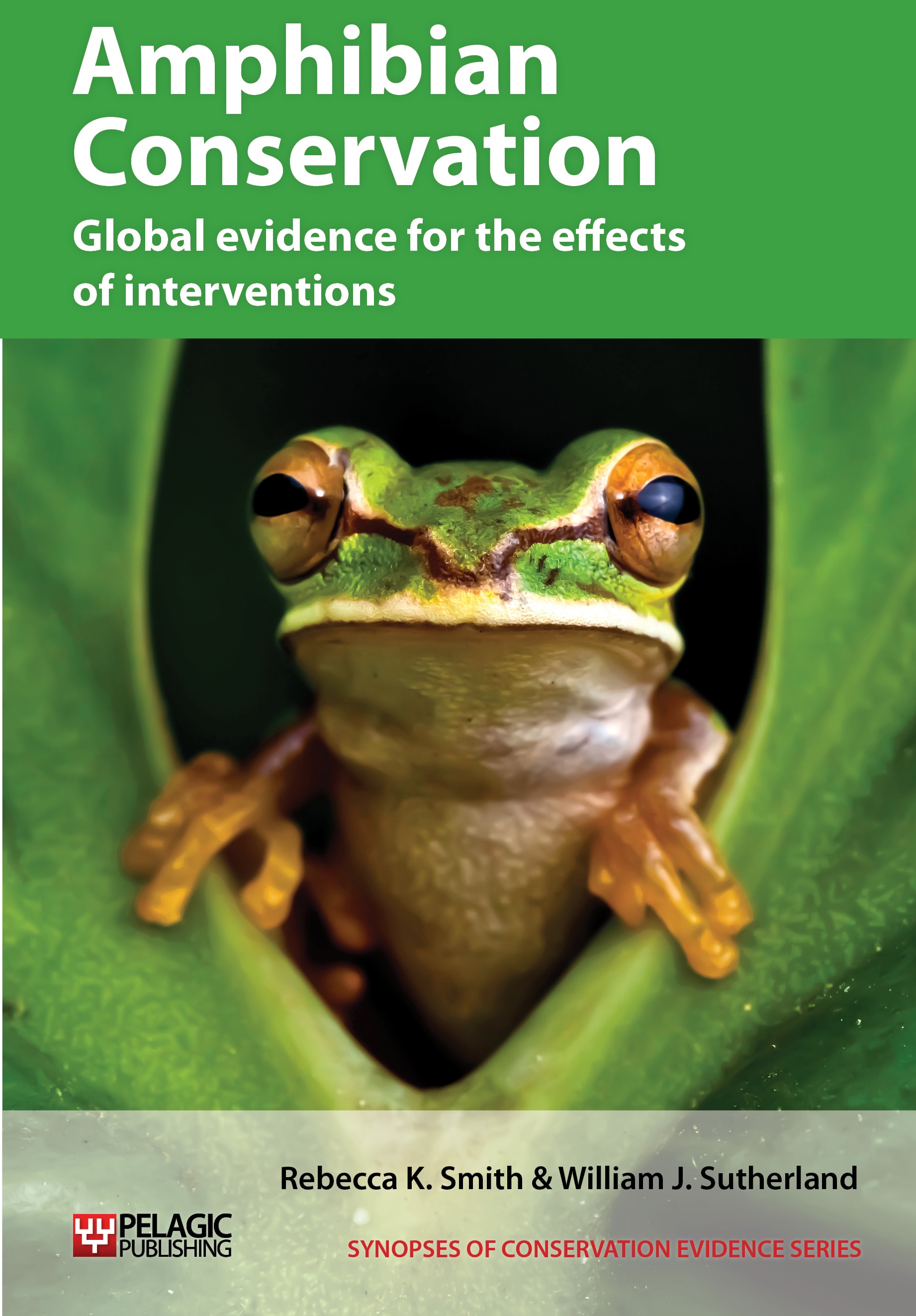Actions to conserve biodiversity
We have summarised evidence from the scientific literature about the effects of actions to conserve wildlife and ecosystems.
Review the evidence from the studies
Not sure what Actions are? Read a brief description.
Search for evidence
e.g. "frogs chytrid"
130 Actions found
Refine
Hide
130 Actions found
Download Actions
| 0 selected |
|
Order results by:
| Action | Effectiveness | Studies | Category | |
|---|---|---|---|---|
|
Manage grazing regime Action Link |
Unknown effectiveness (limited evidence) | 7 |
|
|
|
Mechanically remove mid-storey or ground vegetation Action Link |
Unknown effectiveness (limited evidence) | 1 |
|
|
|
Modify gully pots and kerbs Action Link |
Likely to be beneficial | 1 |
|
|
|
Change mowing regime Action Link |
Unknown effectiveness (limited evidence) | 1 |
|
|
|
Use humans to assist migrating amphibians across roads Action Link |
Unlikely to be beneficial | 6 |
|
|
|
Use legislative regulation to protect wild populations Action Link |
Unknown effectiveness (limited evidence) | 2 |
|
|
|
Protect brownfield or ex-industrial sites Action Link |
No evidence found (no assessment) | 0 |
|
|
|
Restrict herbicide, fungicide and pesticide use on and around ponds on golf courses Action Link |
No evidence found (no assessment) | 0 |
|
|
|
Manage cutting regime Action Link |
Evidence not assessed | 0 |
|
|
|
Reduce tillage Action Link |
No evidence found (no assessment) | 0 |
|
|
|
Maintain or restore hedges Action Link |
No evidence found (no assessment) | 0 |
|
|
|
Plant new hedges Action Link |
No evidence found (no assessment) | 0 |
|
|
|
Manage silviculture practices in plantations Action Link |
Evidence not assessed | 0 |
|
|
|
Use amphibians sustainably Action Link |
No evidence found (no assessment) | 0 |
|
|
|
Commercially breed amphibians for the pet trade Action Link |
No evidence found (no assessment) | 0 |
|
|
|
Use signs and access restrictions to reduce disturbance Action Link |
No evidence found (no assessment) | 0 |
|
|
|
Encourage aquatic plant growth as refuge against fish predation Action Link |
No evidence found (no assessment) | 0 |
|
|
|
Remove or control non-native crayfish Action Link |
No evidence found (no assessment) | 0 |
|
|
|
Remove or control invasive cane toads Action Link |
No evidence found (no assessment) | 0 |
|
|
|
Prevent heavy usage or exclude wildfowl from aquatic habitat Action Link |
No evidence found (no assessment) | 0 |
|
|
|
Use zooplankton to remove zoospores Action Link |
No evidence found (no assessment) | 0 |
|
|
|
Sterilize equipment to prevent ranavirus Action Link |
No evidence found (no assessment) | 0 |
|
|
|
Prevent pollution from agricultural lands or sewage treatment facilities entering watercourses Action Link |
No evidence found (no assessment) | 0 |
|
|
|
Augment ponds with ground water to reduce acidification Action Link |
No evidence found (no assessment) | 0 |
|
|
|
Use irrigation systems for amphibian sites Action Link |
No evidence found (no assessment) | 0 |
|
Download Actions
| 0 selected |
|

Amphibian Conservation - Published 2014
Amphibian Synopsis
Watch this search
If you are familiar with RSS feeds, please click the button below to retrieve the feed URL:
RSS feed for this searchIf you are unfamiliar with RSS feeds, we would suggest reading this BBC article.
Unfortunately, due to the number of feeds we have available, we cannot provide e-mail updates. However, you could use tools such as Feed My Inbox to do this for you.
What are 'Individual studies' and 'Actions'?
Individual studies
An individual study is a summary of a specific scientific study, usually taken from a scientific journal, but also from other resources such as reports. It tells you the background context, the action(s) taken and their consequences.
If you want more detail please look at the original reference.
Actions
Each action page focuses on a particular action you could take to benefit wildlife or ecosystems.
It contains brief (150-200 word) descriptions of relevant studies (context, action(s) taken and their consequences) and one or more key messages.
Key messages show the extent and main conclusions of the available evidence. Using links within key messages, you can look at the paragraphs describing each study to get more detail. Each paragraph allows you to assess the quality of the evidence and how relevant it is to your situation.
Where we found no evidence, we have been unable to assess whether or not an intervention is effective or has any harmful impacts.





)_2023.JPG)














